Food you can’t miss in Japan. I love Japan and the food has made me love it even more!. I visited Japan earlier last year on a foodie quest to eat my body weight with a list of foods to try! I managed to cross out most of the foods I’ve listed.
“Irrashaimase!”, Meaning “Welcome!”, that ubiquitous greeting at Japanese restaurants everywhere immediately sets the tone for a unique gastronomic experience. You know that you’re all set for an enjoyable encounter, and more often than not, you walk away satisfied and full.
Japanese food is the best food I have ever tasted, It’s the best cuisine in the world for me. There is so much to choose from and there’s something for everyone. From mini rice cakes to sushi from a vending machine, Japan offers the hungry traveller plenty of unique culinary experiences. Don’t go home without trying, at least, one of these traditional Japanese foods.
MOCHI
Mochi is Japanese sticky rice cake, very chewy and sweet. It is usually made from sweet rice (Mochi rice) and is often eaten by Japanese during New Year. But you can find mochi all year round, Japanese Supermarkets, convenience stores and even subways have Mochi stores which offer a variety of flavoured Mochi. My personal favorite is the green tea and mochi with red bean paste.

EDAMAME (400 Yen)
Edamame is a young soybean usually in the pod. If European Countries like Spain & France restaurants offers olives as an appetizer, Japanese restaurants offer edamame, popularly known as the lightly steamed and perfectly salted appetizer. I’ve always wanted to taste this popular snack since most beauty and health Gurus I followed raved about this bean as their favorite snack alternative. Unfortunately, they do not sell it in my location. So when I finally get the chance to visit Japan I was so excited to finally taste this mysterious beans everyone was raving about. My first try wasn’t as enjoyable as I expect it to be, we used to have a similar bean from my country where we also eat the pod. So I did the same here not knowing that only the bean are supposed to be eaten.
For those of you who haven’t eaten edamame yet, here’s how to eat it, place the pod in your mouth, then squeeze or bite the beans into your mouth. You don’t eat the pod, just the edamame beans inside, which easily pop out. Learn from me!

SUSHI
Cost per plate (160 – 230 Yen)
Japan is surrounded by the oceans so fish is one of the main food to get protein. Because of its mountainous environment and by its religion Shinto/Buddhism, beef, pork, and other meat were not accepted widely until Meiji Restoration. In addition, Japanese cuisine puts emphasis on the natural flavor of the materials. Raw fish (sushi/sashimi) is one of the ultimate ways to taste this natural flavor.
A 6am sushi breakfast at the Toyko fish market is a must for sushi fans. It is worth keeping in mind though that true Japanese sushi is very different from the sushi we can get anywhere else, with the focus being on the flavor of the raw, fresh fish – so most of the sushi are simple rice with fish on top (nigiri), rather than elaborated sushi rolls.
If you are a sushi lover you might want to check this post 50 best Sushi Restaurant in Tokyo.

TAKOYAKI
(300-500 Yen)
Takoyaki is a ball-shaped Japanese snack made of a wheat flour-based batter and cooked in a special takoyaki pan. It is typically filled with minced or diced octopus, tempura scraps, pickled ginger, and green onion.
Although Takoyaki is one of Osaka’s quintessential street foods they’re basically found everywhere in Japan. It is always served piping hot. It’s slightly crispy outside and gooey inside. It is commonly spotted as a street food eaten on the run.


RAMEN
(800 – 1200 Yen)
My personal favorite of all Japanese foods. Ramen is high in the running for national dish of Japan. They even opened a Ramen Museum dedicated to its history. The instant ramen noodle was voted as the greatest Japanese export of the 20th century in a national poll (placing ahead of karaoke machines and walkmen). And, just as with pizza in the U.S., regional styles and specialties abound with soups, noodles, and toppings, all varied according to local tastes, ingredients, and cultures.
Ramen are usually categorized according to their soup base, with 4 main soup types Shoyu, Shio, Miso and Tonkatsu served with a lot of different toppings. My personal favorite topping is the Chashu which is a Fatty slices of roasted or braised pork.
Although Ramen are widely offered in Japan, and not even once did I tasted a bad ramen noodles. My personal ramen shop would have to be Menya Musashi at Shinjuku.
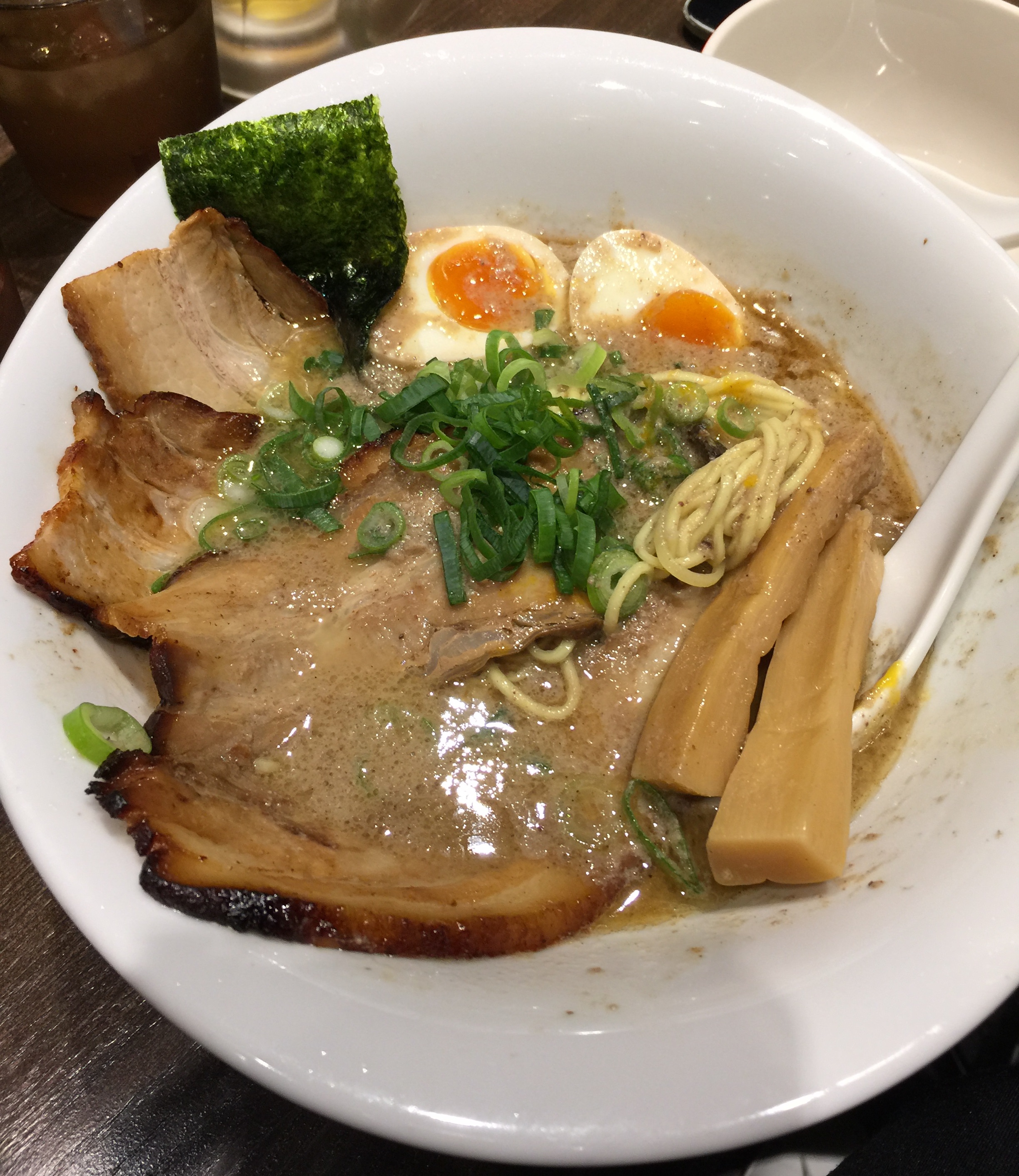
IMAGAWAYAKI
(300 Yen)
A Japanese desert made with batter cooked in a special pan with a circular shape. It’s traditionally filled with red bean paste. These little cakes are the most heavenly things on the planet Earth (in my opinion). It is slightly similar to a Filipino-Chinese dessert “Hopia”, although hopia is a flakier pastry.
Although we were able to buy ours at Hiroshima station, it is also available in Tokyo at Asakusa Naniwaya, located near the east exit of Tsukuba Express Asakusa Station.Wakaba in Yotsuya , Naniwaya in Azabu Juban, Nezu no Taiyaki in Nezu.
TAKO TAMAGO / OCTOPUS STUFFED WITH QUAIL EGGS
(1 pc/ 350 Yen)
Tako Tamago “lollipops”. These are grilled baby octopus on a stick where the head is stuffed with a boiled quail egg. I am personally not a fan of octopus but we did snack a few. The stuff quailed eggs gave it a little twist though.
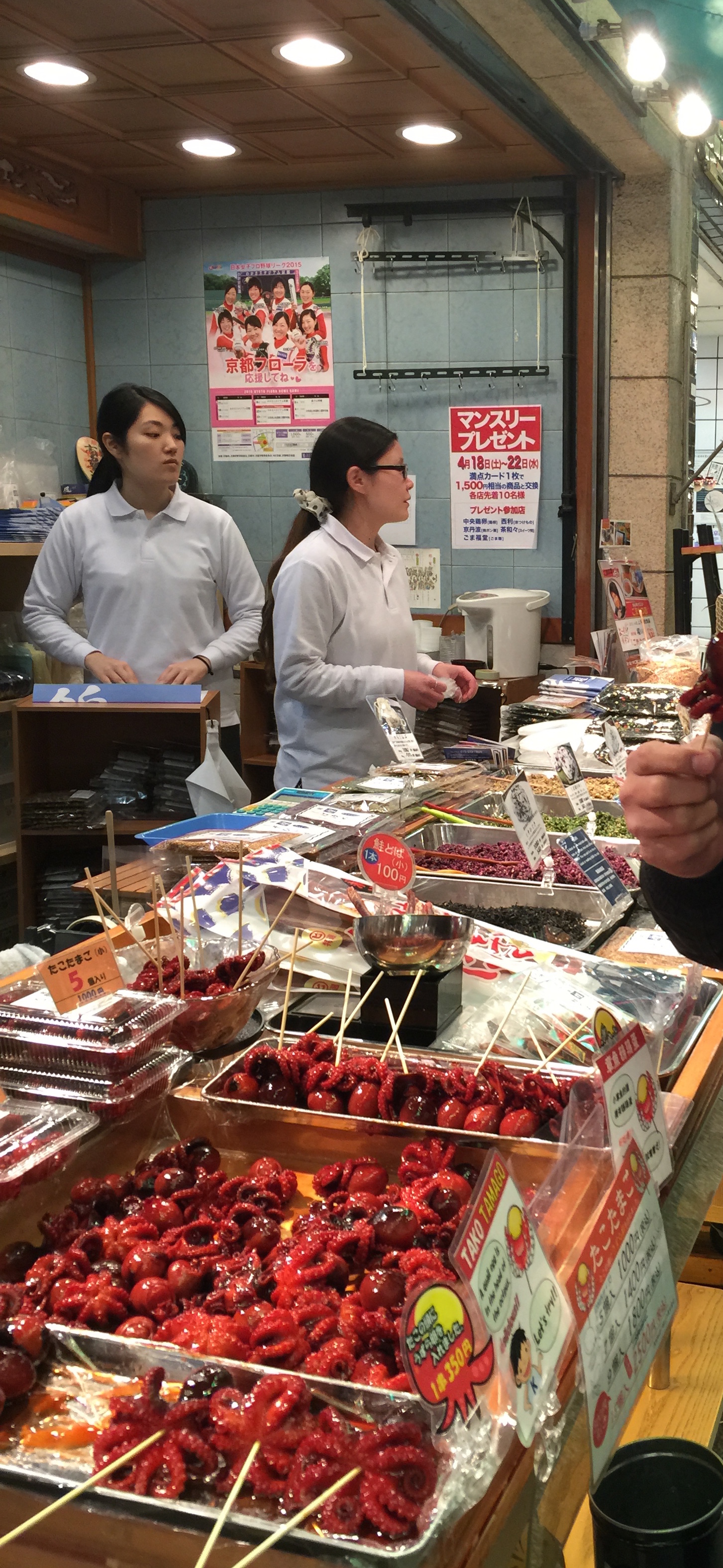
OKONOMIYAKI
Okonomiyaki, literally means “grilled as you like it” in Japanese. … In most versions okonomiyaki is made with shredded cabbage and a pancake-like batter.

For an okonomiyaki-lar experience try to eat at Machiya. The restaurant is Located at the underground food hall, near the Kyoto JR station but I’m pretty sure there are branches in Tokyo.
We were looking for a place for dinner at Kyoto Station and noticed a queue outside this restaurant and more often than not it is an indication of a good restaurant, so we joined the queue and was pleasantly surprised. This is like a teppanyaki restaurant except that you can further cook at your table. Plenty of meat and noodle dishes which are partially cooked by the chefs and then placed on your cooking pan for further cooking. We had the pork okonomiyaki and some grilled pork and they were both superb. Price was reasonable, we spent around 3000 Yen for 2 meals and a drink plus the dining experience was matchless.

GRILLED CRAB LEGS
If you happen to be visiting Osaka, you should not missed the Dotonbori, a large scale downtown along the south bank of the Dotonbori-gawa Canal. Osaka is known as the gastronomists’ town, and thus the entire area of Dotonbori is thronged with an unbelievable number of restaurants. Being hungry in a new city and not knowing the language, we can only rely on our nose and so while we were walking on the street of Dotonbori my sense of smell was captivated by the sweet and smoky smell of the grilled crab legs being cooked in a simple charcoal bbQ grill. I actually really like the sweet taste of crab but it is not something I eat often because as you know, I am too lazy to use my hands but I made an exception here. The grilled legs smelled so tasty and the cool Japanese vendor guys totally sold us on it.
FRUITS
I’ve always wondered why fruits in Japan are extremely expensive, it is even considered as a luxury product, and features heavily in Japan’s gift-giving culture, along with other gourmet foodstuffs including whiskey and black tea.
When in Japan, try to visit at least one fruit stores and see the flawless fruits beautifully packaged and very well protected from any potential damage. Though it might be compulsive to say that looks are everything, but just a look at those perfectly ripe strawberries gave me a foodgasm. I am a berry girl, but as everyone knows, middle east cannot grow berries so the berries that are being sold here are imported and are either no longer fresh or are very expensive. I make it a point to eat berries when traveling.

GYOZA (200 Yen)
Gyoza are Japanese dumplings filled with ground meat and vegetables and wrapped in a thin dough. Although they originated in China as jiaozi it has become a very popular dish in Japan. And with Japanese cuisine being word class of course their Gyoza tend to be more subtle in flavor than their Chinese counterpart.
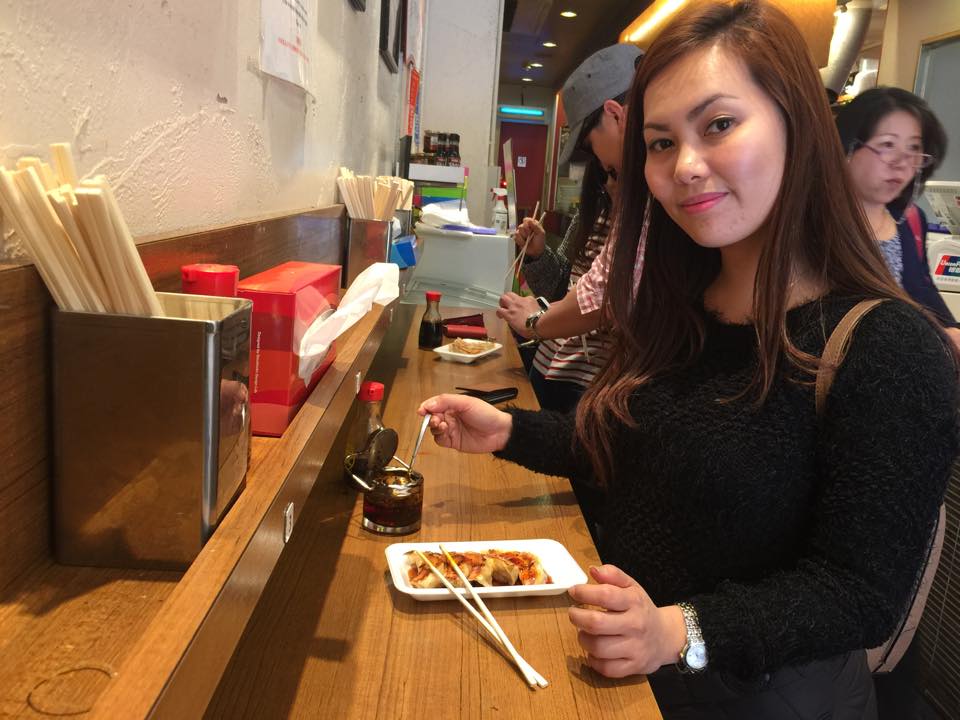

ICE CREAM (350 – 500 Yen)
Ice cream can get bizarre in Japan, here you can find the most exotic flavor of ice creams from vanilla to green tea to soy sauce to sea urchin to grilled eggplant to snake? yes! you read it right, there is a snake flavor ice cream in Japan, you name it an you can find an ice cream of this flavor.
Thankfully, I wasn’t indulging myself with a snake flavor ice cream here. If you are not in to fancy flavored ice cream. There should be one that is right for you. My personal favorite is the Taro flavored ice cream.
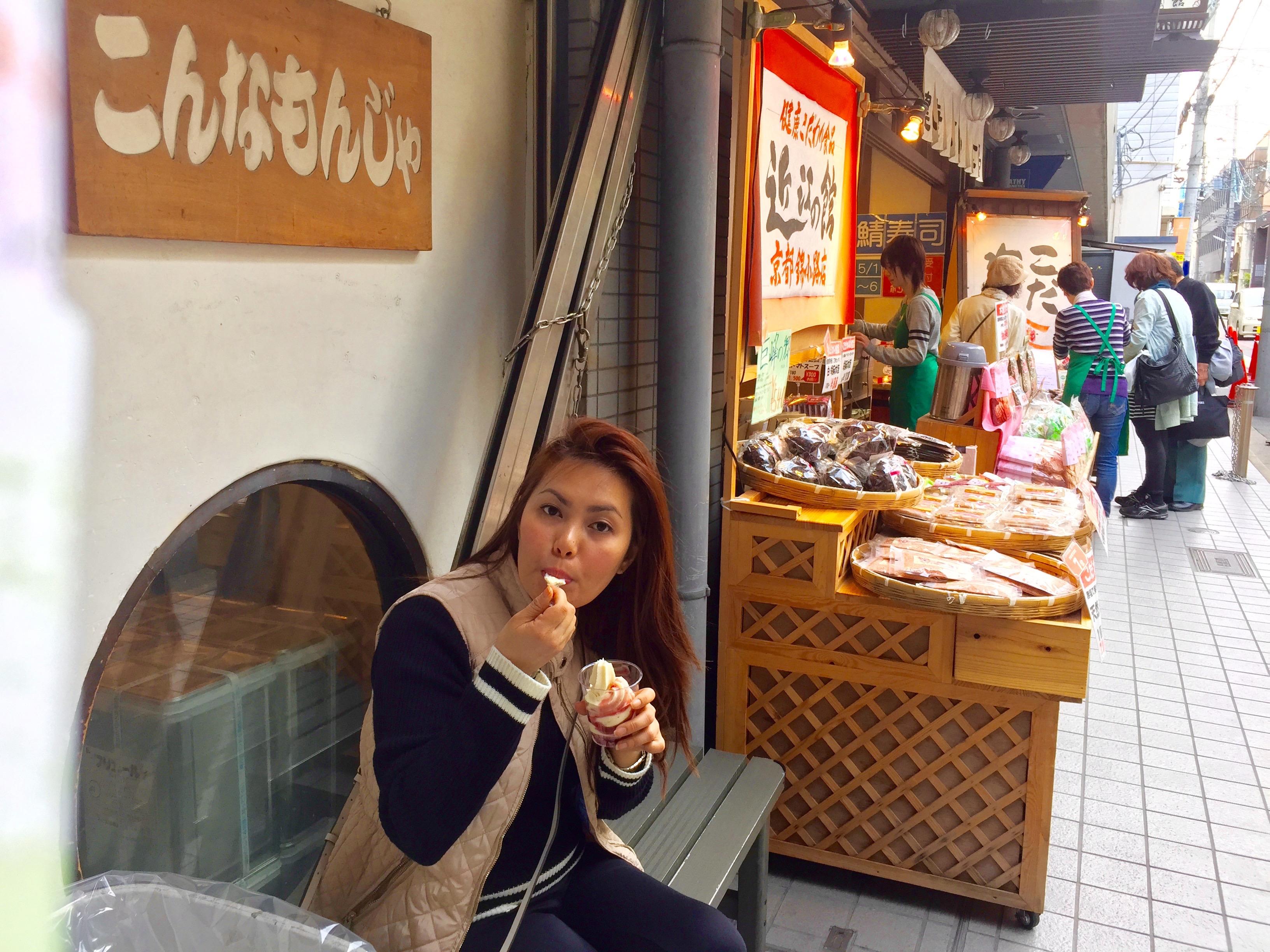

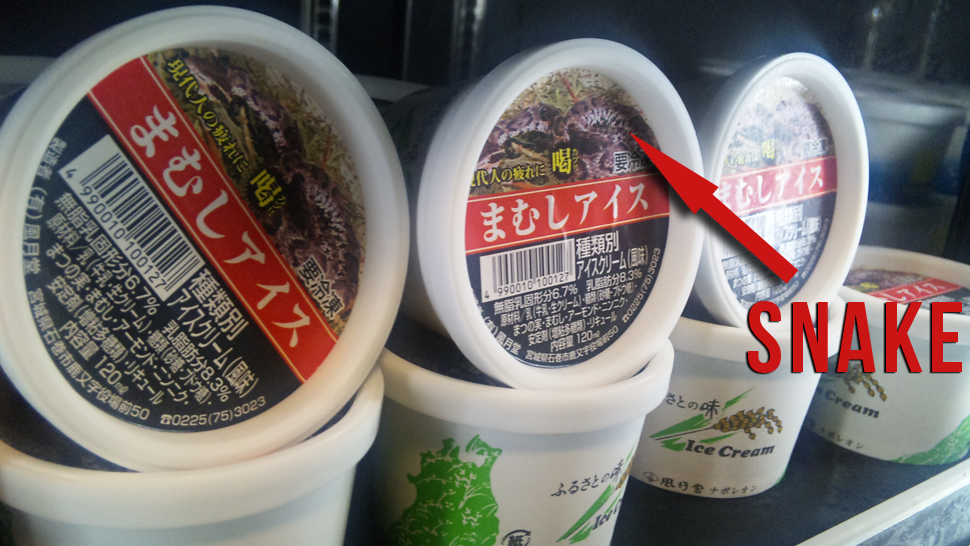
Amazing! Snake Flavor! I think you I should try it.. lols..